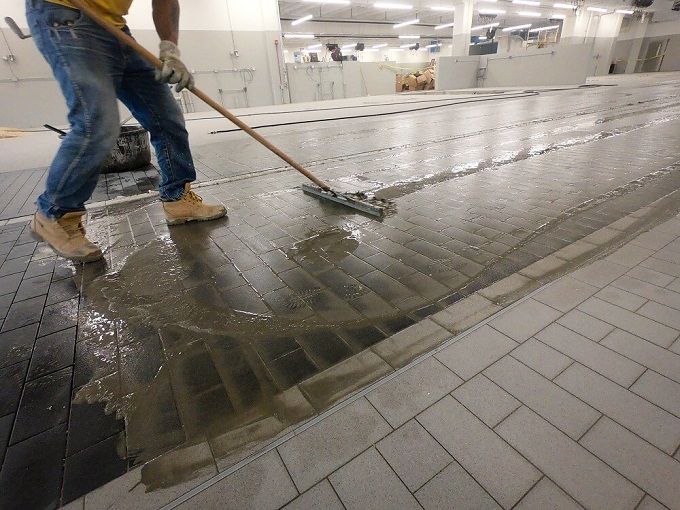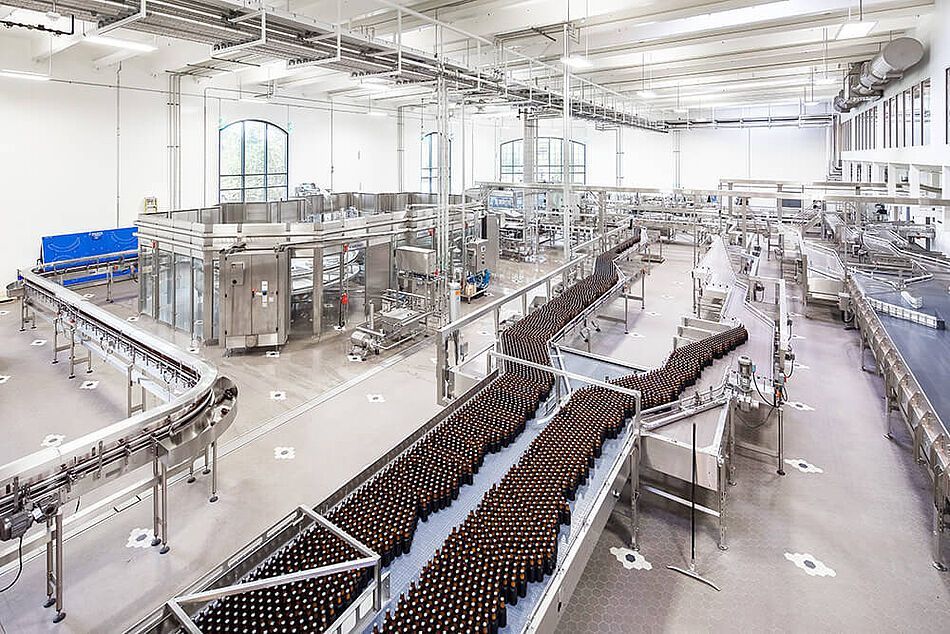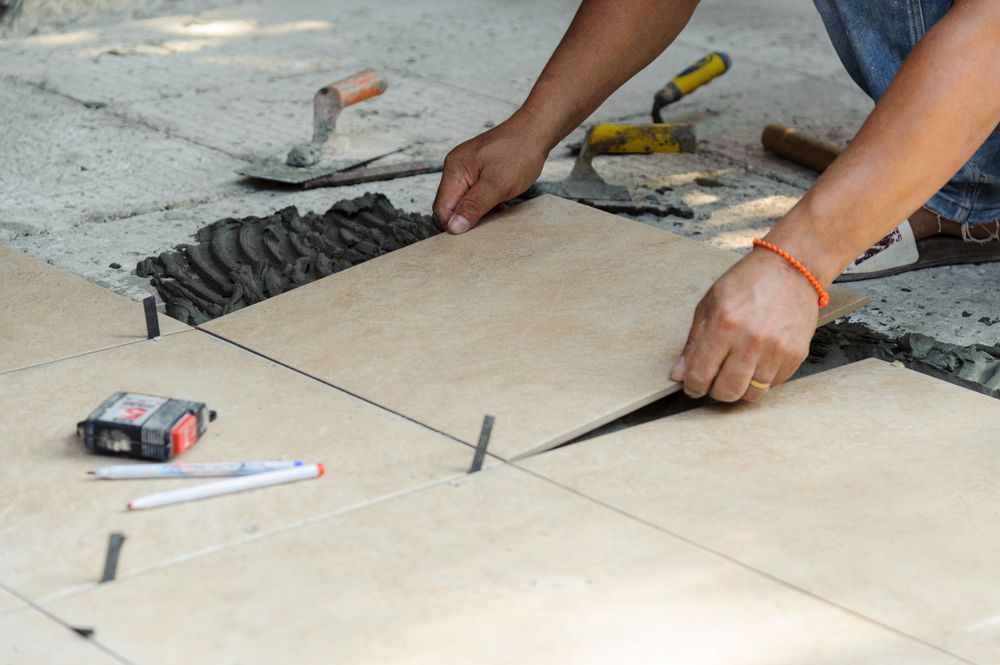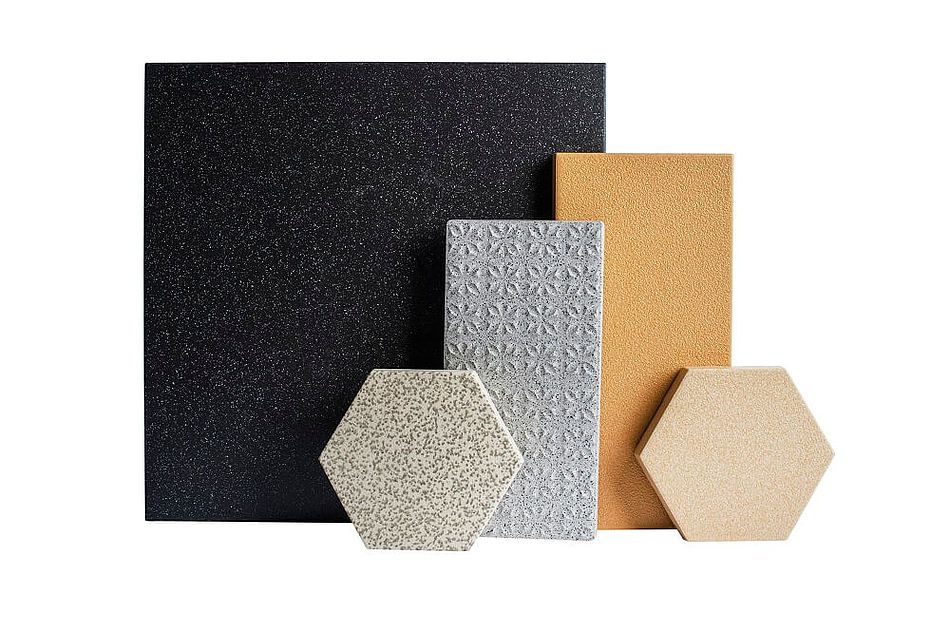
How do I know how much grip my business' nonslip floor needs? And what do all of those R numbers actually mean?
When choosing industrial flooring for your business, a key concern is the safety of the people who will be walking on it.
“Nonslip flooring” is flooring with a raised texture to provide a level of slip resistance. The smoother the floor, the more slippery it will be.
Your first thought might be, “I don’t want anyone slipping on my floor; give me the most nonslip floor you’ve got!” If so, then hold your horses. Your dedication to safety is admirable, but you need one more piece of information: the rougher your floor, the harder it is to clean.
All vitrified tile floors are relatively easy cleaning. Soil does not adhere well to ceramic, and most industrial tiles have a baked-on finish that enhances cleanability. But the bumpy, "orange-peel" texture of a nonslip floor means there are tiny nooks and crannies on the surface where dirt can settle, and it will take more scrubbing to get that dirt out.
The sweet spot is a floor that provides just enough slip resistance to keep people safe without being so coarse it becomes difficult to clean. This is true no matter what flooring material you use.
The amount of slip resistance you need depends on what is happening on your floor. The floor in a wet or oily environment like a car wash or brewery needs more grip than the floor in a dry environment like a bakery.
HOW IS SLIP RESISTANCE MEASURED?
The slip resistance of Argelith Ceramic Tiles is measured according to standards set by DIN, the German Institute for Standardization. DIN sets norms and standards for quality assurance, environmental protection, safety, and communication in industry, technology, science, and government.
DIN measures the slip resistance of flooring intended for working environments using R values. To find an R value, from R9 to R13, DIN puts a section of the installed flooring on a machine similar to a treadmill. The floor starts out level, then gradually tilts on a downhill slope. A tester wearing a specific type of nonslip footwear walks on the floor as it tilts. To simulate an oily working environment, a light coating of motor oil is brushed over the floor and on the soles of the tester’s shoes.
When the tester begins to slip, the angle of tilt is recorded. This test is repeated multiple times with multiple testers, and the results are plugged into a formula that determines the slip resistance of that particular surface.
- R9: Slip resistant at a slope of 6 to 10 degrees
- R10: Slip resistant at a slope up to 19 degrees
- R11: Slip resistant at a slope up to 27 degrees
- R12: Slip resistant at a slope up to 35 degrees
- R13: Slip resistant at a slope greater than 35 degrees
R10 and R11, shown in the image below, are the most common surfaces, appropriate for most industries.
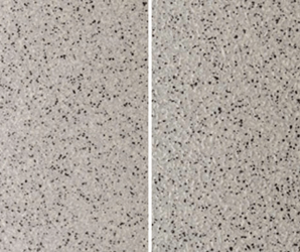
In the U.S., tiles must meet standards set by ANSI. While the standard is essentially the same, the testing process is different. In the U.S., testers seek to establish the dynamic coefficient of friction, or DCOF. They slide a calibrated tool in 10-inch swipes in each direction over tiles that have been wet with purified water. The tool measures the slip resistance of the tiles and assigns a number. To meet U.S. standards for slip resistance, tile intended to be installed indoors in wet environments must have a DCOF of 0.42 or better.
V PROFILES FOR EXTRA SECURITY
Sometimes, even a slip resistance of R12 or R13 isn’t enough. Flooring in those areas typically includes a raised pattern of dots in addition to the bumpy surface texture. Argelith refers to these nonslip tiles as “napped” tiles. Napped tiles have both an R value – measuring the smoothness of the ceramic surface – and a V value that measures the depth of the space between the dots. V06 is the lowest raised pattern and V10 the highest. Here is an example of a tile with an R13 V10 surface, intended for the slick floor conditions of slaughterhouses and meat packing plants.

WHICH SURFACE SHOULD I CHOOSE?
All Argelith Ceramic Tiles are available in multiple levels of slip resistance. Your account manager is a valuable resource in reviewing the needs of your facility and recommending the R value that will best serve your needs.

